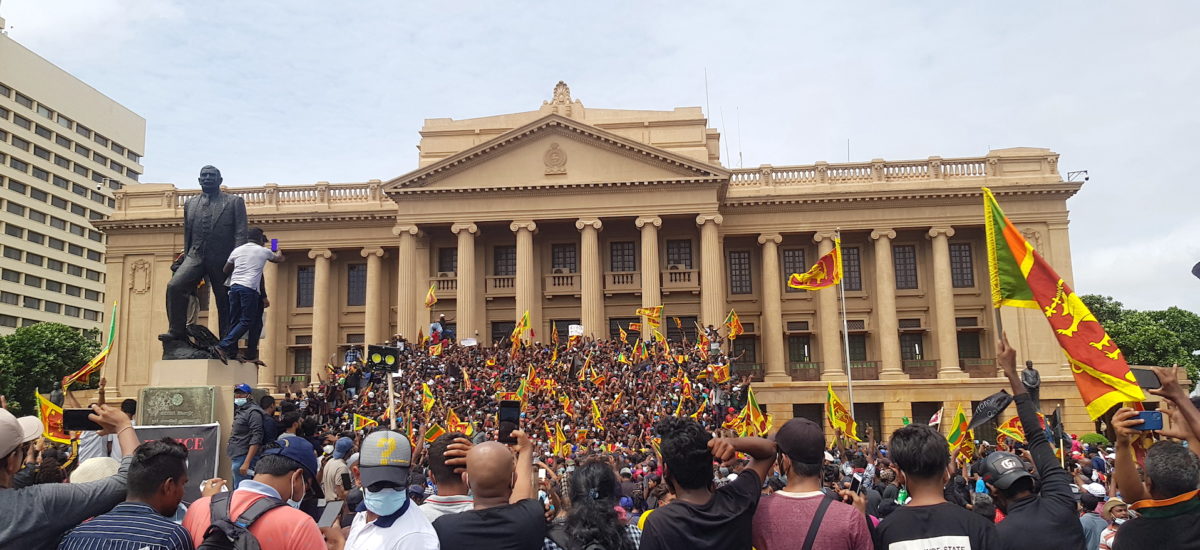Sri Lanka was recently struck by a wave of mass protests and demonstrations throughout the country, which began because of the economic and political crisis. The protests were extremely effective. Protestors stormed barricades and there were clashes withpolice, who fired tear gas and water cannons at the protestors. There were reports of police and army vehicles being damaged, although it remains contested as to whether the damage was caused by protestors or actors external to the protests.
The primary protests in Colombo catalyzed similar protests in other parts of the country, creating a highly volatile and difficult political situation. This article will analyze two areas pertaining to protests in September and discuss the efficacy of continuing to protest.
The economic crisis as a catalyst fuelling the protest movement
Former prime minister Ranil Wickremesinghe was elected president on July 20 in a parliamentary election following protests in response to the country’s worst economic crisis in decades. President Wickremesinghe is no stranger to politics. However, the hand that he has been dealt with is difficult; it is perhaps impossible to resurrect an economy that has completely crashed and to save Sri Lanka from falling into an even worse situation than it is already in.
The economic crisis has manifested itself in two ways. Firstly, it has led to a series of rolling blackouts, with islandwide power cuts. The electricity shortages provoked widespread anger, creating immeasurable difficulties for employees and companies to operate. The other lens of the crisis is the food and fuel shortages and the increase in prices of essential food commodities such as milk, rice and sugar. Ordinary Sri Lankans are also dealing with high inflation and a depleted exchange rate as a result of soaring international debt and a weak national economy. These conditions are fuelling anger and resentment among the public. The economic crisis is compounded by the country’s lucrative tourism industry and foreign worker remittances being sapped by the COVID-19 pandemic. However, it is too simplistic to point the blame at particular politicians or individuals and one has to sympathize with President Wickremesinghe and Prime Minister Dinesh Gunewardena. They are both doing their best in an impossible political and economic situation. The current economic crisis has been in the making for decades and is a combination of multiple factors – circumstances, bad luck and the fact that we are a poor, under developed country.
Meanwhile, the unemployment rate is rising daily. University graduates, students and others are finding it impossible to find a paying job to support themselves and their families. The official national unemployment rate stands at 4.6%. However, this figure does not account for the different types of unemployment that persist in the economy including cyclical unemployment, structural unemployment, and frictional unemployment. Unemployment has a knock on effect on protest movements as it creates a feeling of anger and desperation that propels people onto the streets and increases anti-government sentiment. Unemployment creates immeasurable financial difficulties, reducing the health of the labour market, denting economic progress and creating a stagnation scenario. Addressing the unemployment situation is therefore critical.
Conclusion
The situation in relation to protests in Sri Lanka is worrying. One could draw an analogy between the Arab Spring and the factors that are playing out at present such as high unemployment, weak national financial institutions and currency and debt related issues. There is a domino effect developing with protests in one part of the country spilling over into others. These protests, vital for the country’s democratic benchmarks, portend instability and chaos in the economic, political and social landscape. The central question remains: what is the solution to the national economic crisis and the demands of the protestors? This is a difficult question with no single or easy set of answers. Finding an internal solution within a democratic framework will prove challenging but Sri Lanka has to strive for an inclusive and effective solution immediately or it risks plunging into further economic and political chaos, bringing about a humanitarian crisis.
The writer can be contacted at [email protected]


